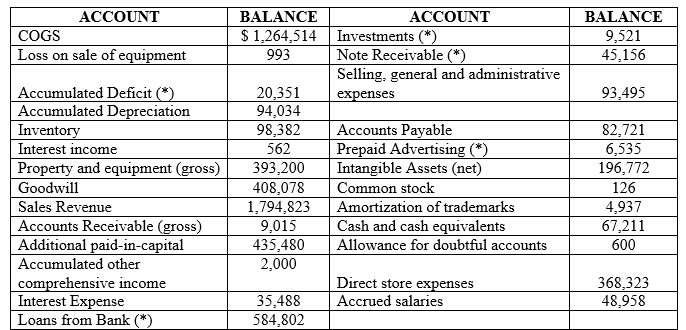
Outsourced accounting from a CPA firm is less expensive and may be enough to meet your needs. Getting expert tax and accounting advice is worthwhile for virtually every business. A Certified Public Accountant (CPA) with experience in your industry can provide valuable financial insight and ensure you meet your tax obligations. Standard costing is very beneficial for creating and polishing budgets as it gives predefined cost estimates that can be measured against actual expenses. The chief disadvantage lies in having to routinely update the standards which can be arduous in case of constantly changing market conditions.
What is your current financial priority?
This form of accounting is also useful when the company undergoes regulatory checks and inspections. Financial accounting allows businesses to assess overall monetary health and manage finances in the business, making it a crucial aspect of manufacturing bookkeeping processes. Manufacturing accounting is the process of forecasting, analysing, and reporting on the financial status of a manufacturing organisation. Manufacturing accounting also involves tracking raw material costs, making inventory valuations, and strategically pricing finished goods. An integral component of manufacturing accounting lies in efficient inventory management.
- Variable costs change depending on the number of units your manufacturing firm produces.
- These would include expenses such as storage facility or warehouse mortgage fees, bank loans, machinery and equipment depreciation, and some labor costs.
- Manufacturing accounting is a group of inventory and production management processes used for monitoring and controlling the costs involved with manufacturing products.
- This article lists the various methods of accounting and costing methods for manufacturing business owners to help you have a detailed understanding of all the concepts and principles involved.
- The solution is to build a custom tech stack out of multiple smaller, cheaper, cloud-based systems that integrate to create a synchronised flow of data between each area of your business.
Activity-based costing (ABC)

These articles and related content is not a substitute for the guidance of a lawyer (and especially for questions related to GDPR), tax, or compliance professional. When in doubt, please consult your lawyer tax, or compliance professional for counsel. Sage makes no representations or warranties of any kind, express or implied, about the completeness or accuracy of this article and related content. Job costing, also known as variable costing, is better if you manufacture to order or focus on a small amount of units. For example, this could include a custom-built machine or a small batch of products. Manufacturing overheads might include the costs for powering a factory’s equipment and personnel not directly involved in producing the product.
Inventory valuation
In fact, the IRS previously dismissed this method as inaccurate, only allowing businesses to use it for tax purposes in 2008. As a result, it’s worth investing in developing a deeper understanding of the related accounting and tax rules. If nothing else, it’ll help you analyze your financial statements and reports to improve the efficiency of your business. While you probably won’t handle all your business’s accounting personally, you still need to understand it. A lot of manufacturing accounting revolves around creating records that managers can use to inform business decisions.
As your manufacturing business fdic seeking to transition from quarterly call reports grows and expands, you may want more functionality from your accounting software to help manage your growth. Invoiced is great for businesses that need to keep on top of their accounts receivable and invoicing. It automates everything from payments to reminders to collections, with the goal of getting your company paid faster — something most manufacturing companies need. An accounting software or service can help you avoid costly mistakes and get a clear picture of your overall finances. This includes any items used in the production process but is not yet part of the finished product.
Other manufacturing account types may include administrative costs, marketing costs, and cost of goods sold (COGS). You’ll want to base your accounting software solution on your business needs, but there are some basic features you may want to consider to choose the best accounting software. A manufacturing company reports taxes as a separate item in the income statement after the net profit. The amount of taxes is contribution margin deducted from the net profit to arrive at the bottom line, i.E., The net profit after tax. When preparing the income statement, the enhanced cost of production is taken into account to compute the cost of goods sold. Manufacturers of highly differentiated products need to track costs for each unit so they can set prices appropriately and monitor the profitability of their products.
This means that the inventory valuation in the accounting records will be inaccurate, except when a physical count is performed. By integrating your accounting software with Katana’s cloud manufacturing platform, you’ll get all these essential features and more. Get a demo of Katana, and see why thousands of manufacturers trust Katana to manage their entire business. Sign up for a demo today and unlock the power of streamlined manufacturing operations.
Join Sage
A manufacturing account is one of the three accounts in the accounting system, the other two being a trading account and balance sheets. This information can help companies budget for future production runs and make informed financial decisions. Moreover, it is dubbed a complete business because it buys the raw materials used to create a product before selling it. The above entry would increase the production cost, thereby reducing the gross profit disclosed by the trading account. The amount of markup is added to production cost, i.e., the manufacturing profit. Work-in-process (WIP) or work-in-progress inventory refers to products that have made it through part of the manufacturing process but remain unfinished.
Direct costing is primarily useful in undertaking pricing decisions for the short term. The method cannot be applied to long-term pricing decisions as it requires tangible information surrounding overhead costs and other aspects of production. Direct costing methods can be used in periods when the market sees changes and businesses might have to tweak previous decisions for the time being. Identifying the margin of profit you earn on the products your business creates and sells is an important part of manufacturing accounting.
A manufacturing account tracks a manufacturing business’s production costs, materials used, and inventory levels. It involves tracking the costs for every item you produce, including direct materials, direct labor, and manufacturing overhead. Your manufacturing accounting software should also help you keep compliant with regulations and the tax laws of the countries you have a business in. Often, manufacturers invest in an all-in-one solution, which handles other tasks away from finances, such as planning and production. Ideally, data should move freely between production lines and the back office, meaning you have accurate real-time data. Employing job costing enables businesses to assign costs to import into adp run payroll 2020 each production run or batch of products, facilitating a comprehensive tracking of expenditures specific to each job.